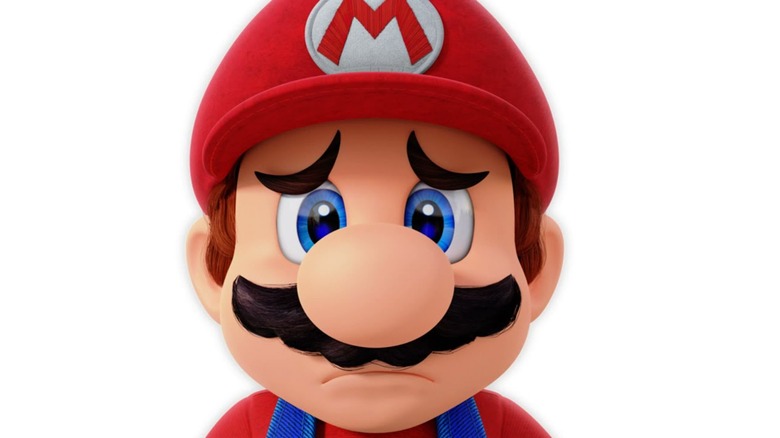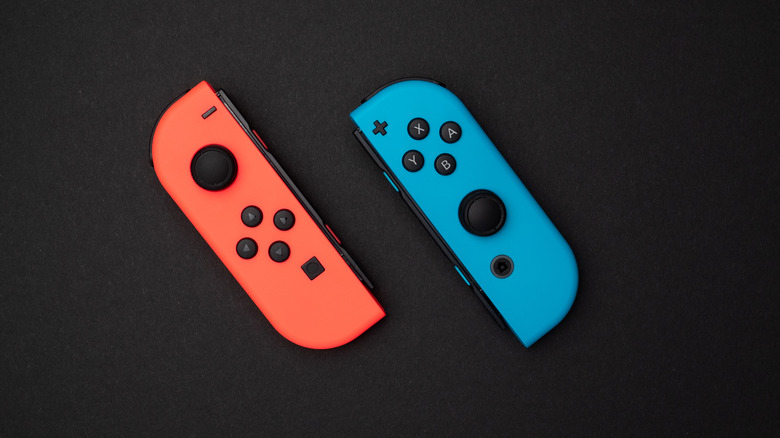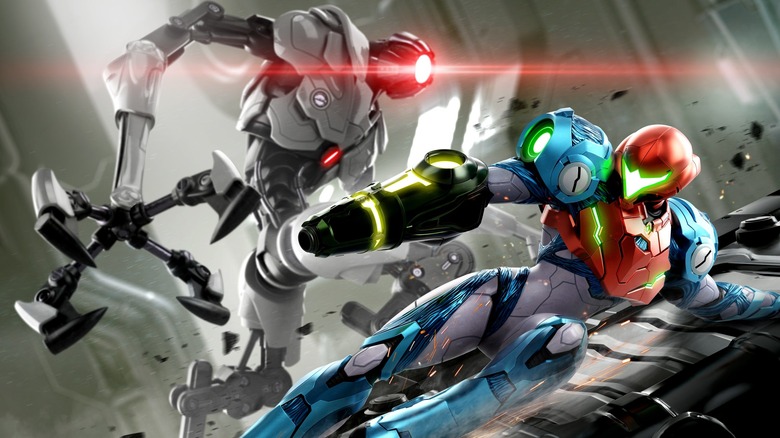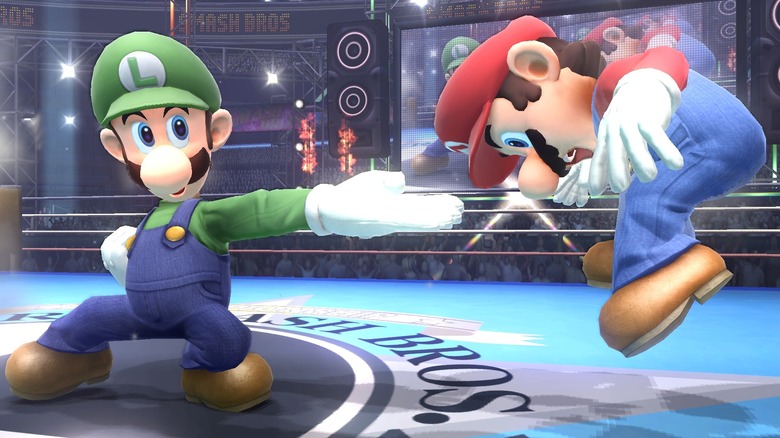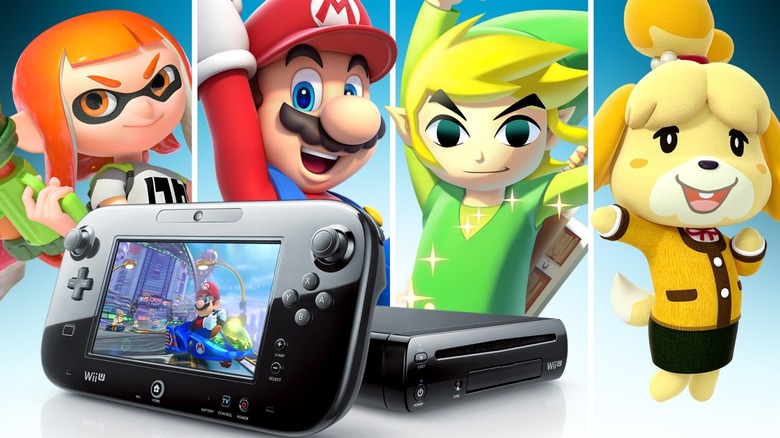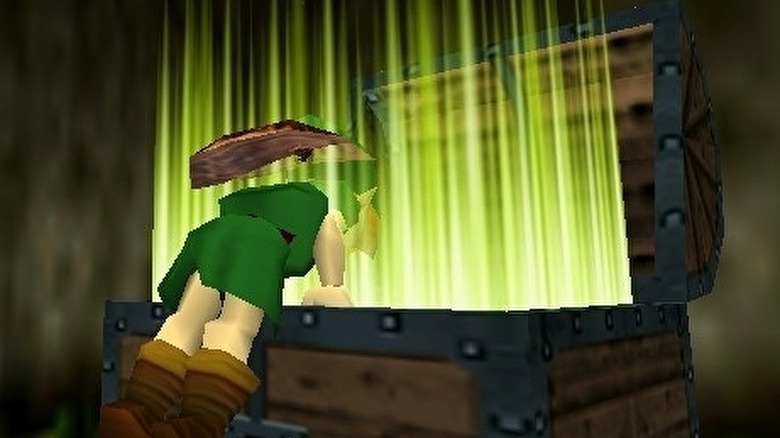Why Nintendo Won't Release The Switch Pro
Players have waited for quite some time to hear Nintendo make good on fans' longstanding calls for a "Switch Pro" model, which would theoretically usher in stunning 4k resolution and other upgrades. Unfortunately, the truth about the "Pro" version of the ultra-popular Switch is that it doesn't seem to be a top priority for Nintendo. And although the OLED Switch was released in October 2021, it underwhelmed gamers looking for more than a couple of minor improvements.
The way things are looking now, there's a good chance players won't ever see a Nintendo Switch Pro — at least not the way they'd imagine. Instead, Nintendo is much more likely to skip the rumored Pro model and move right into whatever new system is meant to succeed the Switch. While some fans may not think this is in the company's best interests, Nintendo may have a few valid reasons for not jumping the gun on introducing another new console. So here's why players shouldn't expect a Nintendo Switch Pro any time soon.
Joy-Con drift is still a problem
Many Switch owners have run into a persistent problem in the form of the dreaded "Joy-Con drift." Players have found that the Joy-Con analog sticks register inputs on their own after some use, even when the controllers aren't being held. The issue has led to characters walking off to their doom if the player puts down the controller and takes their attention away from the game. Unfortunately, while Joy-Con drift has plagued players for years, Nintendo has never successfully addressed the problem, even as lawsuits have piled up.
Over the years, Nintendo has gone to great lengths to do everything possible to add more longevity to the Joy-Con controllers, improving the quality of parts in the devices as time has gone on. Still, the company is well aware that it'll never fully remedy the situation. In a Q&A for the Switch OLED, Nintendo executive and General Manager of Nintendo's Technology Development Division Ko Shiota confirmed fans' worst fears.
When asked whether the Joy-Con drift was inevitable so long as parts made physical contact, Shiota said, "Yes, for example car tires wear out as the car moves, as they are in constant friction with the ground to rotate. So with that same premise, we asked ourselves how we can improve durability, and not only that, but how can both operability and durability coexist? It's something we are continuously tackling." Ultimately, it seems that in their current form, Joy-Cons will always be susceptible to wear over time.
Nintendo is currently more focused on software
At least for the time being, Nintendo has indicated that it has every intention of bolstering its lineup of available games and services rather than focusing efforts on a new console — even at the expense of its mobile presence. The company had never been one to follow Sony or Microsoft's practices of releasing multiple versions of the same console with different levels of power and performance, instead focusing mainly on its first-party franchises and making games that keep current fans happy.
Based on Nintendo's newest entry in the "Metroid" timeline with the critically praised "Metroid Dread" and its efforts to reconnect players with old-school classics via the virtual Sega Genesis and N64 apps, it's safe to say that the company is still wholly invested in delivering quality software to players. Alongside massive upcoming titles set to debut on Switch, like the sequel to "The Legend of Zelda: Breath of the Wild," Nintendo is always working on getting more third-party titles on the console and supporting the cloud-based versions of newer games, like "Dying Light 2."
A Switch Pro Could Divide Players
Perhaps one of the more obvious reasons Nintendo never decided to pursue a more powerful Switch is to avoid dividing its own players. It's something the industry has unfortunately seen before, especially in regards to recent Sony and Microsoft consoles. Recent examples like the disastrous launch of "Cyberpunk 2077" or even the well-received "Control" tell the same story. When titles are being developed for multiple platforms of varying power, there's going to be a clear winner and loser in performance; something developers like Remedy Entertainment have extensively commented on in the past.
In the case of "Cyberpunk 2077," the game was nigh-unplayable on last-gen consoles and is still being ironed out since its release in late 2020. As for "Control," massive drops in frame rate were reported for players on base PS4 or Xbox One consoles (per Polygon). Naturally, the same types of situations could happen to Nintendo too, if it had a lineup of consoles all competing for the same shelf space.
As it stands, there isn't a high bar and a low bar for Switch games; there's just what the console is capable of and what it isn't.
Nintendo Doesn't Want A Repeat Of The Wii U
One of the more recent Nintendo flops was the ill-fated successor to the ultra-popular Wii, the Wii U. The Wii U sadly flopped when it was released in 2012, but it certainly wasn't the fate Nintendo had initially expected for the console. Releasing to little fanfare, the Wii U tried to take all the success the Wii experienced and amplify a few core features that fans loved.
Instead of motion controllers, the system was controlled with a tablet. In addition, the Wii U also sported some technical updates, including added graphical power and a then-impressive HD display. Unfortunately, while these ideas sounded good on paper, they didn't land the mark. As Chris Kohler (via Wired) put it, "Wii U has staked out a weird middle ground that nobody seems to be standing on. On one flank it has the high-end videogame consoles, which are actually not that much more expensive than a Wii U. On the other are tablets and smartphones, which represent a much better value for more casual players. Wii U isn't the perfect fit for anyone who isn't already motivated to buy it because they're fans of specific pieces of Nintendo software."
It would seem like just making a more technically impressive Switch would solve problems, but it'd be far too easy for Nintendo to replicate its mistakes with the Wii U when trying to make the fabled Switch Pro.
Analysts Expect A New Nintendo Console In 2024
There's no need for another Switch if analyst predictions hold true, and they've had a pretty good track record so far. During Gameindustry.biz's yearly gaming prediction panel, Amphere analyst Piers Harding-Rolls said, "I'm not expecting a Switch Pro in 2022. We have a next-gen Nintendo console in our forecasts for late 2024, so I'm not convinced a 'Pro' model is going to appear at all." Harding-Rolls doesn't expect a Switch Pro at all, because Nintendo seems to be approaching the point in the Switch's life where the company will begin looking towards what comes next.
The Switch will be seven years old by 2024, and that's actually over the average amount of time between Nintendo's previous console launches (per Business Insider). Given the history of when Nintendo announces new consoles, alongside the impressive track record of correct predictions made by Harding-Rolls, it's safe to say that players only have to wait a couple more years at most before Nintendo's ready to show off its next big thing.
While players may have been upset as the years have gone on with no definitive signs of a Switch Pro, it's probably for the better. Persistent Joy-Con issues, the ramifications of juggling two versions of the same console, and other logistical issues could haunt a Switch Pro model and potential do more harm than good. The best case scenario might just be for Nintendo to learn form its recent successes and turn it into something new that players will fall in love with.

